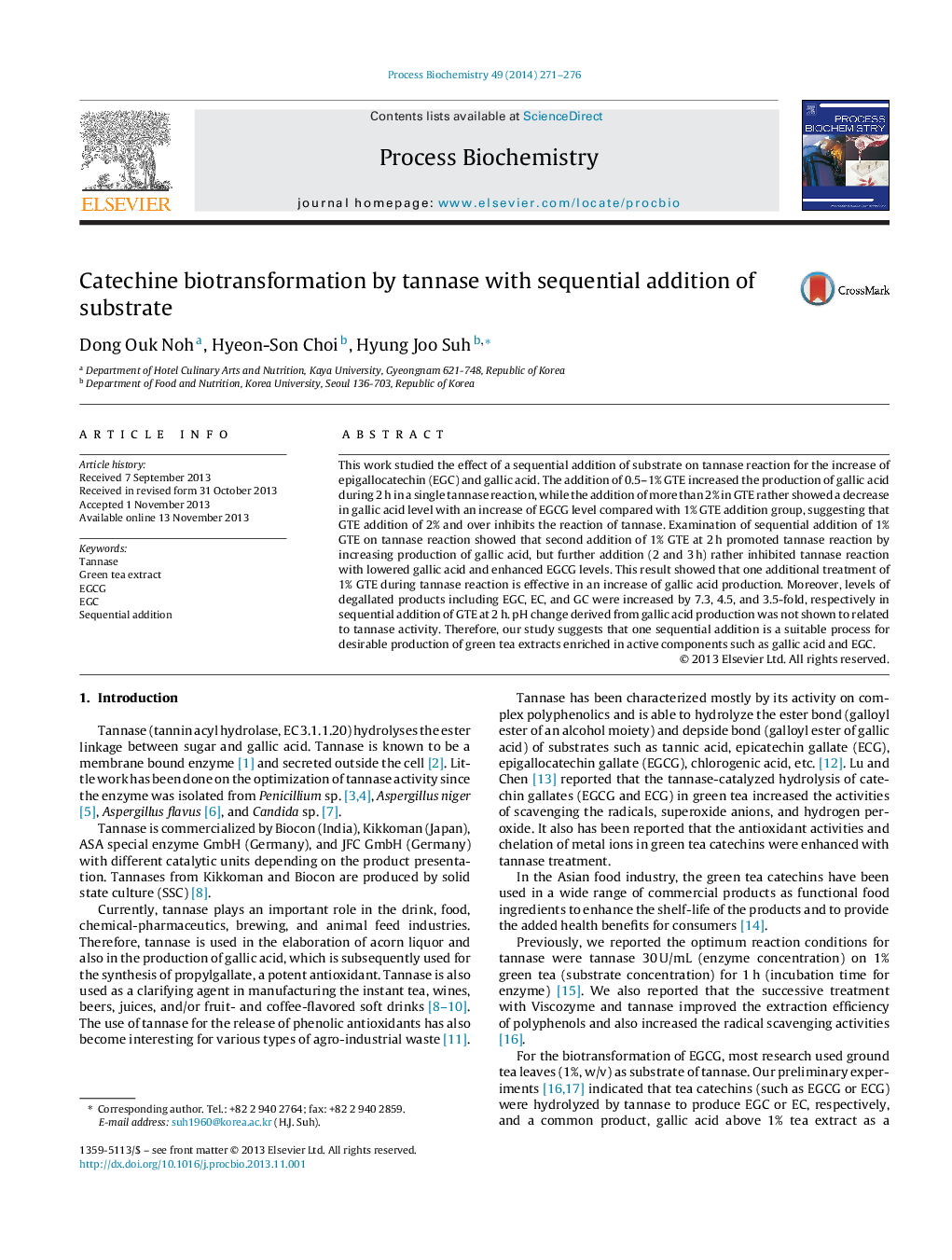| Article ID | Journal | Published Year | Pages | File Type |
|---|---|---|---|---|
| 34793 | Process Biochemistry | 2014 | 6 Pages |
•Tannase was used less than 1% tea extract as substrate because of substrate inhibition.•Tannase reaction was inhibited by the addition of 1% EGCG.•Sequential addition of substrate might solve the substrate inhibition of Tannase.•Sequential addition of substrate is appropriate process for the enrichment of active components.
This work studied the effect of a sequential addition of substrate on tannase reaction for the increase of epigallocatechin (EGC) and gallic acid. The addition of 0.5–1% GTE increased the production of gallic acid during 2 h in a single tannase reaction, while the addition of more than 2% in GTE rather showed a decrease in gallic acid level with an increase of EGCG level compared with 1% GTE addition group, suggesting that GTE addition of 2% and over inhibits the reaction of tannase. Examination of sequential addition of 1% GTE on tannase reaction showed that second addition of 1% GTE at 2 h promoted tannase reaction by increasing production of gallic acid, but further addition (2 and 3 h) rather inhibited tannase reaction with lowered gallic acid and enhanced EGCG levels. This result showed that one additional treatment of 1% GTE during tannase reaction is effective in an increase of gallic acid production. Moreover, levels of degallated products including EGC, EC, and GC were increased by 7.3, 4.5, and 3.5-fold, respectively in sequential addition of GTE at 2 h. pH change derived from gallic acid production was not shown to related to tannase activity. Therefore, our study suggests that one sequential addition is a suitable process for desirable production of green tea extracts enriched in active components such as gallic acid and EGC.
